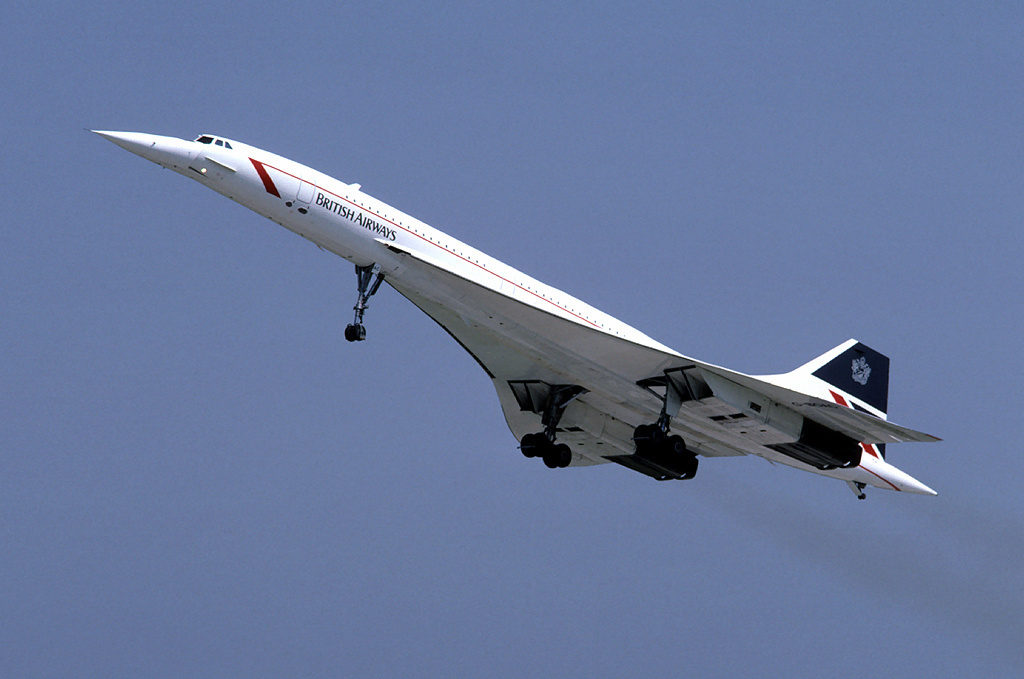Could Supersonic Travel Be On Its Way Back?

Supersonic air travel is back in the public eye now that different organizations are investigating ways to make it a reality—and one company might be able to do just that, even cutting down on the noise from any sonic booms flights produce, which has widely been noted as the downfall of supersonic travel.
Even though they’re relatively new, soon we may be able to say goodbye to ultra long haul flights, like the ones from Newark to Singapore and Doha to Auckland that can stretch up to 20 hours on a plane. Supersonic jets are on the horizon – many companies are looking for ways to create a usable supersonic flight experience that gets us from point A to B quicker.
Aerion is one of those companies, and it says we’ll see supersonic travel sooner than we expect, and with excellent value for business travelers.
“Imagine that you have a young family in, say, Dallas, and a business joint venture in Shanghai,” Aerion’s CEO Tom Vice said, reported in a Skift editorial. “You need to go there a lot. But it’s a 35-hour proposition to get there (check American Airlines), and it takes a toll on you physically. It keeps you apart from your young family. It hampers your ability to work effectively with your colleagues in Shanghai. Suppose we could make that a 12- or 14-hour trip, including a quick connection.”
It’s a great thought, and one that nearly every traveler probably wishes would become reality. But one of the biggest problems with supersonic travel has been the supersonic boom—a loud crack from the sky when a supersonic plane passes over. Except it won’t be an issue anymore with Aerion.
“In October, we unveiled a GE engine—the first civil supersonic engine developed in 55 years—that meets the stringent takeoff and landing noise restrictions that come into effect in 2020,” Vice said. “As a result, the [jet] will fly over land at speeds up to Mach 1.2 (about 50 percent faster than today’s airliners) without a boom reaching the ground.”
The future may be here.
[Photo: Wikimedia Commons]
























...commercial supersonic travel still has a couple of major hurdles to really be economical for all, not just the privileged. First and foremost is fuel consumption. It takes a lot fo fuel to break the sound barrier as even fighters with "supercruise" still need afterburners to take off and accelerate through Mach 1. Basically an afterburner dumps fuel into the rear portion of the engine where it is ignited to give that extra "kick" needed. Not only is it terribly inefficient, but extremely noisy. Fighters only fly above Mach 1 for limited amounts of time, not the total flight envelope like a transport would, so for a long flight a lot of fuel would need to be carried.which means more weight. Thus the fuel's weight itself becomes a factor in fuel consumption. Next is materials. Flying above Mach 1 generates heat, a lot of it, particularly on certain sections of the airframe, as well as impose stresses that are beyond what subsonic transports encounter. As an aircraft heats up it also "stretches" which adds to the issue of materials fatigue. (the SR-71 was actually built with gaps in the skin to compensate for the stretching effect during cruise and when on the ground actually leaked fuel). The trend today is towards lighter airframes and surfaces for more fuel efficiency using composites. That won't work for an aircraft which must endure high temperatures throughout most of it's flight envelope like a supersonic transport would. So to keep weight down, a greater dependency on exotic materials, like Titanium would be required for which would drive the per plane cost up well beyond that of an A-380 or 747-8 super jumbo.. Finally, there is the "boom". Yes, one developer mentions they have a concept to reduce it's impact to a point, however from the demo i heard it still would be objectionable for flights over populated areas. Also as I mentioned above, there is the noise factor of afterburners which are required for takeoff and initial climb out. To be profitable on its own, a supersonic transport would need to have a reasonable "breakeven" point which means either a large passenger capacity (like Boeing's aim with the 2707), or as happened with Concorde, obscenely high fares only the uber-wealthy could afford. Getting the cost down far enough even for business travellers to where it would be compatible to international business fares today would still be an extremely challenging task. The only way I could see it becoming viable even for business (let alone holiday) travellers is if there were major breakthroughs in propulsion, materials, and fuels technology that today are more in the realm of science fiction rather than fact.
the new aircraft would have to be faster than it's predecessors of course. What airports in the world would be able to depart and land/gate such a aircraft and the most important factor it must be profitable for the airline and cost effective for corporate travelers.
Hey Tom, Flightaware currently displays an American nonstop between the 2 cities taking 12.5 hours. Maybe consider another example?
It wasn't just the sonic boom that doomed the Concorde. It flew for over 30 years before being retired. Nobody built a viable competitor or replacement because of the other economic realities - namely operating costs. The Boeing Sonic Cruiser design was a close contender, cruising at mach .98, seating 200-250 people and flying 6000 miles. Airlines wanted lower operating costs, so the Sonic Cruiser plan was scrapped and the 787 design was born.